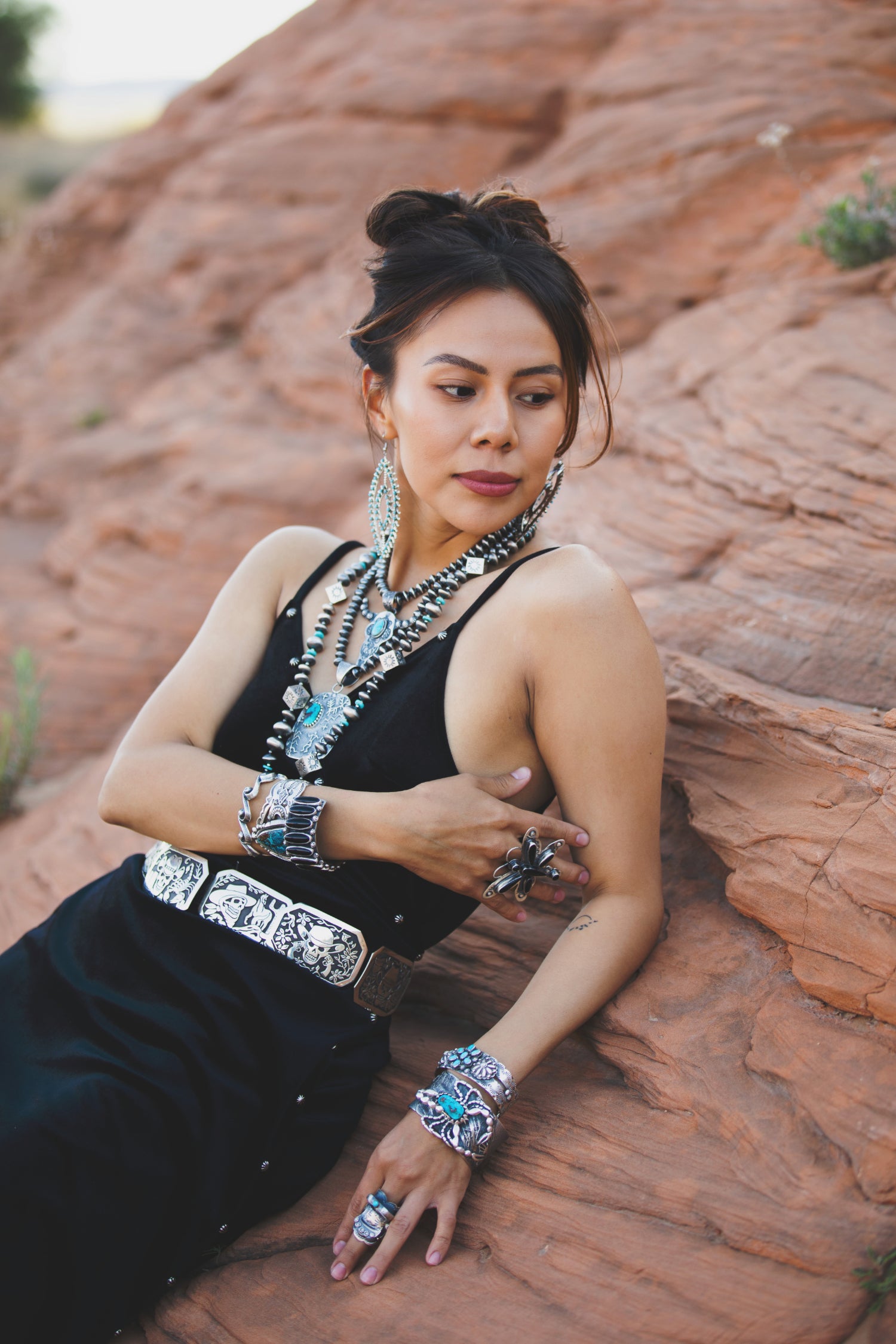Eleanor Trujillo, Two Grey Hill Rug, Navajo Handwoven, 31 in x 60 in
Description
Two Grey Hills/Toadlena
Two Grey Hills/Toadlena style textiles are known for their exceptionally tight weave, handspun natural wool and distinctive coloring in subtle shades of tan, grey, cream and brown. These defining features, combined with elaborate layouts of single or double diamonds, complex storm patterns, geometric elements and intricate borders, make them unique.
In the early 1900s the Two Grey Hills/Toadlena style emerged on the eastern side of the Chuska range, borrowing heavily from the Oriental rug patterns of Crystal trader JB Moore. After 1910, however, with the support of trader Ed Davies at Two Grey Hills and George Bloomfield at Toadlena, area weavers developed a regional style distinctly their own.
Over the past century Two Grey Hills and Toadlena Trading Posts have showcased numerous master weavers such as Daisy Taugelchee, Bessie Manygoats and Clara Sherman. Today, equally talented artists continue in the tradition of their mothers and grandmothers, creating exceptional works of beauty with technical expertise.
Navajo Weaving
The main Navajo weaving technique is classified as weft-faced tapestry. In this method discontinuous horizontal wefts go over and under vertical warps, completely concealing the warp threads.
Warp and weft are important because their coarseness or fineness, along with the skill of a weaver, determine the tightness of a weave. “Tightness” is what differentiates a loosely woven throw, a quality floor rug or museum tapestry. Tightness is defined by the number of weft threads per linear inch. The higher the weft counts, the tighter, finer and more expensive Navajo textiles will be.
You’ll find the lowest weft counts in coarsely woven Gallup Throws, approximately 12-16 threads per inch and the highest, 80-120, in superior Two Grey Hills/Toadlena weaves. The vast majority of Navajo textiles fall somewhere in between. These mid-range weavings have average counts of 30-60 wefts per inch. Textiles in this group are considered well woven, reasonably tight and ably crafted for long lasting wear and beauty.
To determine the weft count of a textile, place a ruler parallel to a vertical warp. With the aid of a magnifying glass count the number of weft threads in one inch. (Double that number to take into account the corresponding wefts on the back face.) Repeat this process in a number of areas since weft counts may vary with the different yarns in a pattern. Average the counts when you’re through. This gives you a good assessment of your piece.
Be aware that the tighter a weaver pounds down the wefts with her comb, and the finer her wool is spun, the higher the weft count will be. Keep in mind too, that the ratio between warp and weft is also important, with the finest textiles having both high warp and weft counts.







